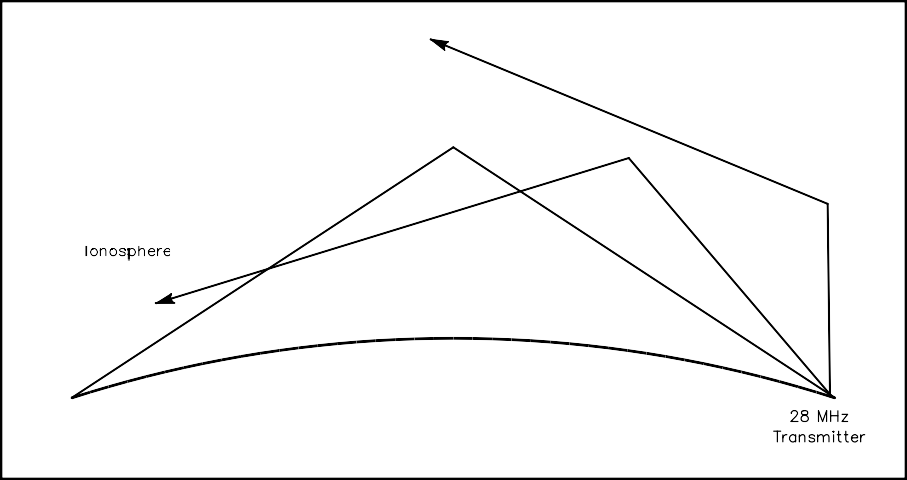Ionospheric Fading
HF signal strengths typically rise and fall over periods of a few seconds to several minutes, and rarely hold at a constant level for very long. Fading is generally caused by the interaction of sev- eral radio waves from the same source arriving along different propagation paths. Waves that
Table 21.2
Maximum Usable Frequency Factors (MUFF)
Maximum Critical Useful Operating Layer Frequency (MHz) MUFF Frequencies (MHz)
F2 15.0 3.3-4.0 1-60
F1* 5.5 4.0 10-20
E* 4.0 4.8 5-20
Es 30.0 5.3 20-160
D* Not observed — None
* Daylight only

Fig 21.10—Signals at the MUF propagated at a low angle to the horizon provide the longest possible one-hop distances. In this example, 28-MHz signals entering the ionosphere at higher angles are not refracted enough to bring them back to Earth.
arrive in phase combine to produce a stronger signal, while those out of phase cause destructive interference and a lower net signal strength. Short-term variations in ionospheric conditions may change individual path lengths or signal strengths enough to cause fading. Even signals that arrive primarily over a single path may vary as the propagating medium changes. Fading may be most notable at sunrise and sunset, especially near the MUF, when the ionosphere undergoes dramatic transformations. Other ionospheric traumas, such as auroras and geomagnetic storms, also produce severe forms of HF fading.
